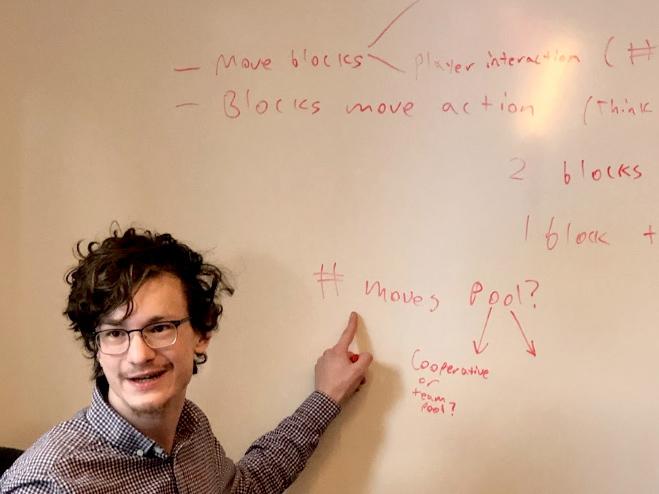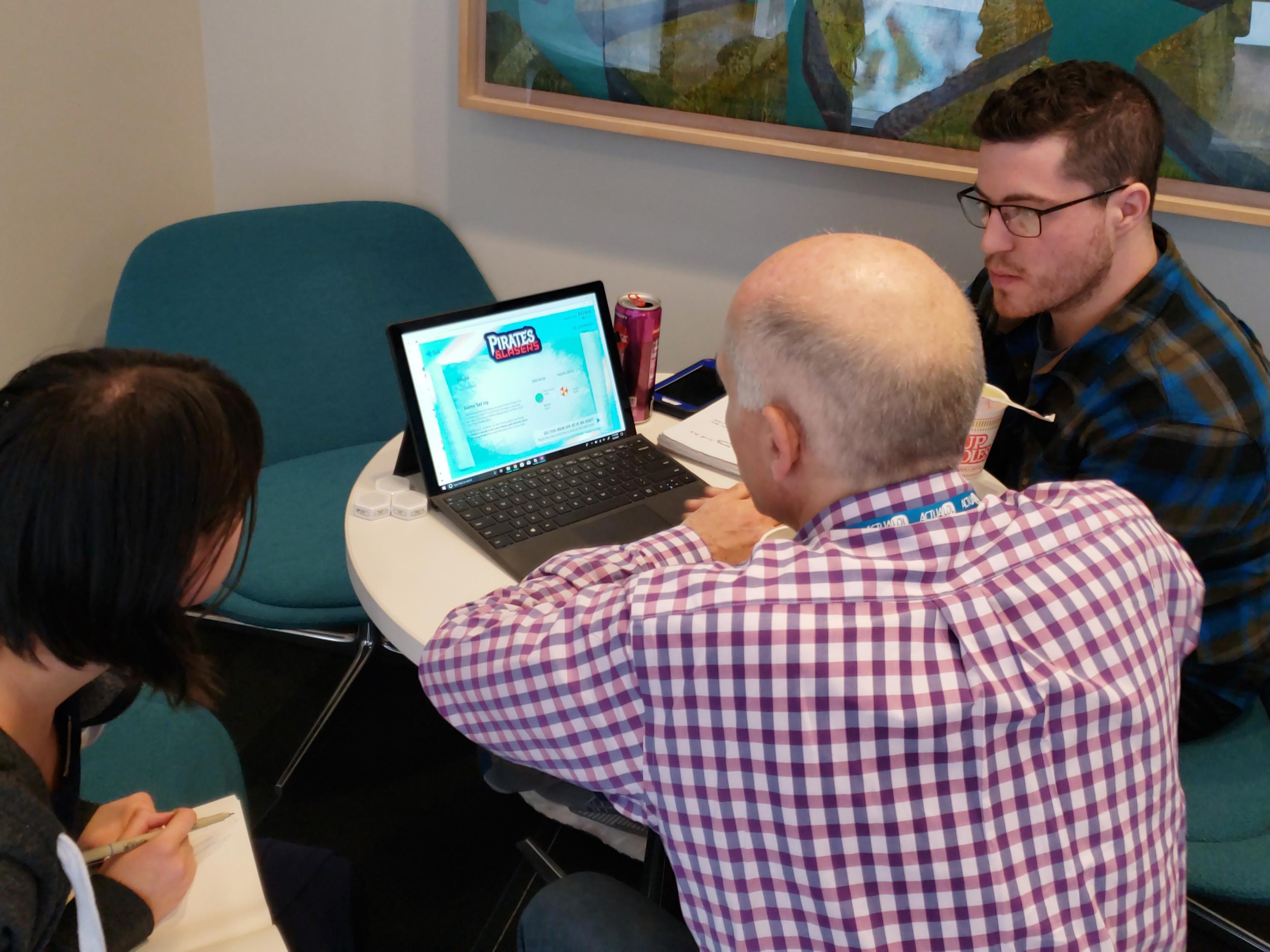Winning game -- In this February photo, Ian Cummins (left) and Theo Johnson show off Blinks game pieces, used to create their award-winning "Pirates and Lasers" game that will be launched as part of the game system's Kickstarter launch.
For Ian Cummins and Theo Johnson, winning the Global Game Jam competition months ago in New York City was just the beginning of an adventure that includes their game’s inclusion in a startup’s new system.
Putting their Oswego knowledge and experiences to work, their team’s game “Pirates and Lasers” earned a top award at the popular conference in late January/early February, and moreover caught the attention of Move38, the parent company for the Blinks game system.
Cummins, a senior cognitive science major, served as the project lead and game designer on the project. Johnson -- who earned his master’s in human-computer interaction in fall 2019, as well as a previous bachelor’s in psychology from Oswego -- worked on user-experience and general design. Their team also included Priscilla McGann and Michael Cooper, whom they met at the conference and decided to join forces for the competition.
“Pirates and Lasers” is a puzzle game that involves strategy and spatial awareness. Players have six or more hexagonal Blinks -- smart magnetic game pieces -- some with green lights on any given side showing health points, and other pieces with red lights denoting hazard pieces, which create lasers that shoot every round, taking away health. Every round, players have to move game pieces to reconfigure the connected Blinks pieces, ideally in a way to sustain the game.
“You’re a ghost pirate captain and you’re trying to stop the lasers from sinking your ship,” explained Cummins, who devised how the game would work, incorporating potential strategies. “The goal is to survive as many rounds as possible. It’s about resource management and damage mitigation.”
“People liked the story and thought it was clever,” said Johnson, who led user testing to refine the game. “If you’re going through product development, you want to make it simple and easy to test.”
They saw that attendees who played the game even once or twice wanted to keep playing, learning and honing their strategies.
Move38 representatives liked the concept and execution as well, and saw “Pirates and Lasers” as an excellent offering to publish for its Blinks game system. It is one of six games that comes with the upcoming community set, scheduled to launch on Kickstarter April 29.
College preparation
“All the skills learned at SUNY Oswego were extremely beneficial to the success of ‘Pirates and Lasers,’” said Johnson. He added that courses in his human-computer interaction graduate program -- including methods and project classes -- were especially helpful.
“HCI Project 1 and 2, which was taught by Damian Schofield, helped me dive deep into managing projects, conducting user research hands on, and analyzing testing data,” Johnson noted. “Damian Schofield has helped me open my eyes to new research disciplines, including Augmented Reality and Virtual Reality; he was an amazing professor to work with.”
Schofield and David Vampola were among the faculty “who have inspired and pushed me to pursue opportunities that interest and challenge me,” Cummins said.
“I learned the importance of diversifying yourself and going to events that, while you may not have experience with what you are going to engage with, you will be given an opportunity to do just that, and that will help you grow,” Cummins added.

Ian Cummins designing the Pirates and Lasers game.

Theo Johnson does user testing for the Pirates and Lasers game.




